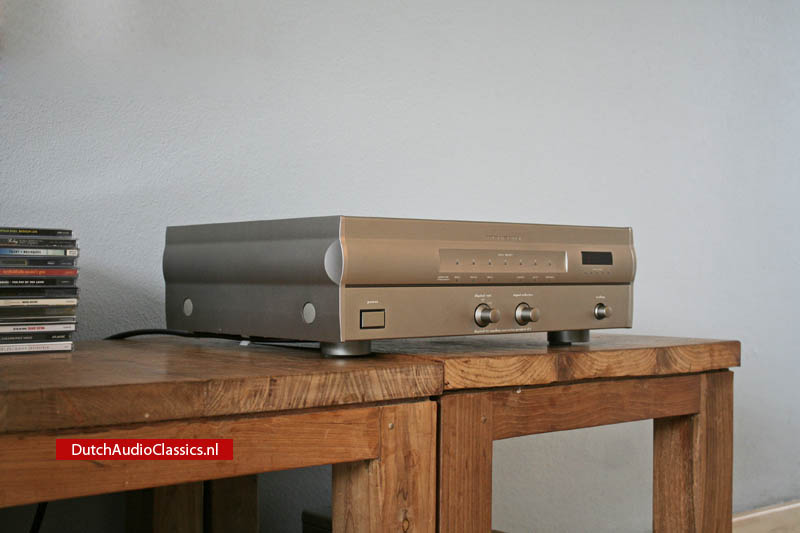The Marantz Project D-1 uses the latest multi-bit technology to pursue the limits in the CD format. The flagship model aims at high-dimensional music reproduction by combining advanced digital technology, including a DSP circuitry, a balanced amplifier and high speed non-NFB circuit.
Advanced DSP
Marantz has developed an advanced original DSP to maximize the performance of de Project D1. By constructing an 8fs digital filter, de-emphasis, an inverter circuit, a D/A conversion ideal for achieving balanced operation in one chip is constructed. It has enabled the reproduction of a precise sound field that makes the air in the performance hall obstructive.
The Phillips TDA1541A S2 (Double Crown) is a multi-bit DAC IC, a real 16-bit dual DAC chip that guarantees 16-bit accuracy over a wide temperature range.
Original all-non-NFB circuit
One of the main causes of the CD sound being cold and harsh is thought to be due to the NFB circuit loop which acts as an antenna, picking up digital noise. Philips has thoroughly examined the merit and demerits of this NFB circuit look and succeeded in developing a conversion circuit with no feedback and excellent in-phase rejection ratio of positive and negative phase. The conversion circuit operates in perfect symmetry as an ideal balanced amplifier.
The actual recording level of CD music software varies depending on the recording age, music genre, label, live recording, studio recording, etc. The output level is the same, and as a result, even though the digital audio format vessels are 16-bit, there is often a lack of dynamics S/N corresponding to that, which is often not achieved in actual playback. There was a sense of realism and nuances of the performance that were originally recorded in, but it was frustrating that it was difficult to reproduce as it was. In Marantz, This problem is essentially addressed, so that the D/A converter's (16-bit) movement always swings properly. In other words, the music signal (amplitude) itself always has 16-bit full dynamics.
In order to achieve this, the scale of the signal (data) at the digital filter stage is sent to the DAC input using the original DSP and can be changed in +9 stages.
Marantz has made it possible to respond to the media. As a result, the presence of the playing scene can be felt, the sound field can be expressed, the breathing of the performer and the taut hands, and the subtle nuances can be brought out, leaving the impression of music originally included in the software.
Advantages of scale-up in music signal waveforms
The actual recording level of CD music is very different depending on the age of recording, music genre, label, live recording or studio recording. As a result, even though the digital audio format device is 16-bit, the dynamic range and S / N corresponding to it are often not obtained in actual playback, and it should have been originally recorded in the software.
There was a sense of presence and frustration that could not be reproduced as it was with the nuances of the performance. Marantz essentially tackles the problem of, in other words, the music signal (amplitude) so that the operation of the D / A converter (16-bit) always swings properly.
The scale of the signal (data) sent to the DAC input at the digital filter stage using the original DSP (a value that is centrally determined in a normal digital filter IC) is set to 10 so that 16 bits are always fully allocated to itself. The Project D-1 is equipped with a "scaling" function that can be changed in 9 steps each, making it possible to support a wide range of soft media. As a result, the presence and sound field expression that makes you feel the atmosphere of the performance scene, the breathing of the performer and the singer, and the subtle nuances are brought out.
The Marantz Project D-1 is not just a digital / analog interface that is inserted between the CD transport and the amplifier, but an interface unit that shortens the distance between the software and the listener.
For software with a low recording level, scale-up improves the reproducibility of insignificant signals such as indirect sound components, overtone components, reverberation, and reverberation that are often buried in noise. .. As a result, the sound field space is expanded, and the nuances of vocals and performances become clearer.























































































































